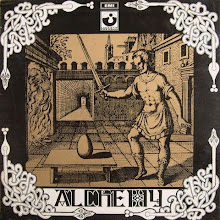He saw on the British landscape arrangement of lines positioned along ancient features, like a very ancient mapping system, looking at maps for further investigation Watkins could see these alignments on maps. Further research showed that stone circles and early churches also formed part of the pattern. The mounds seemed to have been placed so that they could be used as siting beacons. Many of the lines passed through places whose names contained the syllabe ‘ley’. He subsequently coined the term ‘leys’ for them, they are now usually referred to as leylines. In 1925, Watkins published a book on the subject called "The Old Straight Track", and formed a group called The Old Straight Track Club to study them.
Glen Sweeney was fascinated by these patterns, and he saw the music of the Third Ear Band as representing the flow of the spirit over the British countryside. This was reflected in some of his titles of the band pieces, like "Stone Circle" and "Dragon lines." When John Michell published his book that dealt with ley lines and other issues called "The view over Atlantis", Glen asked for the band’s first national tour to be called "Atlantis Rising", and publicised John Michell’s book in the programme notes."
































































